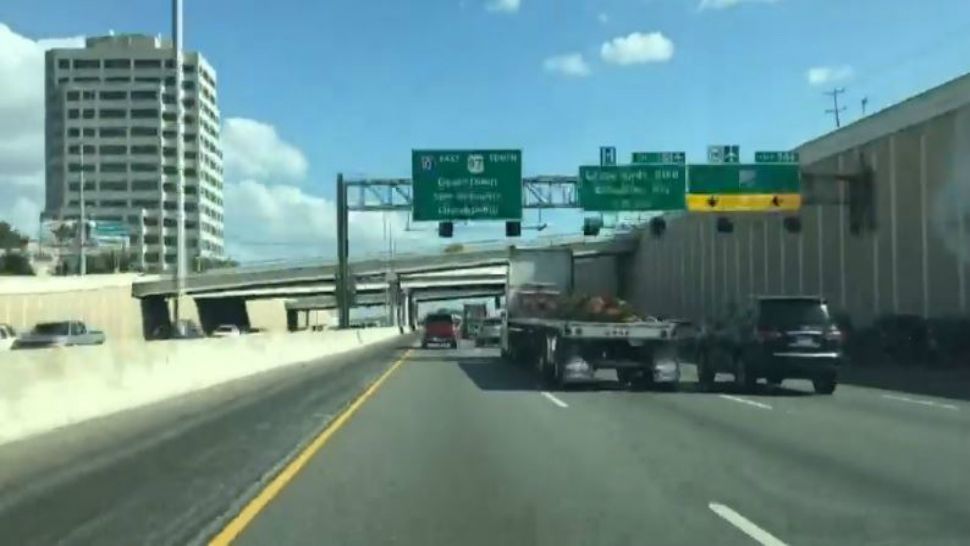SAN ANTONIO -- As one of the fastest-growing metropolitan regions in the country, officials say the city of San Antonio faces a growing need for expanded infrastructure that can meet its expanding population. According to the Texas Department of Transportation, 28.9 million miles are traveled by drivers in Bexar County daily. That number has risen more than 15% since 2010 due to, in part, the growth in population and the increase in economic activity. Engineers point to an amount of truck traffic on San Antonio roadways that has increased far beyond what the infrastructure was designed to accommodate when originally constructed. The increase has not only caused congestion on the region’s highways, but it has also accelerated road deterioration, lengthened drive-times, and increased the amount of fuel burned by commuters. This lethal combination has created what may seem as a never-ending battle for San Antonio to maintain its current infrastructure and create new road capacity that can serve the growing population.
San Antonio is currently trying to get ahead of the growing infrastructure needs by building framework for modern mobility in an initiative called “ConnectSA”. The vision is part of San Antonio’s commitment to transportation innovation and building off the city’s strategic assets. So far, the city has focused on innovative transit solutions, such as integrating last-mile options like scooters and bikes. An advanced rapid transit network is also in the works.
In 2016, VIA adopted “Vision 2040”, which is a three-part plan to transform today’s transit system into one that will withstand the region’s future growth. The drafted project is expected to include the construction of rapid transit corridors to serve as dedicated lanes for public transportation. The corridors could be used for bus rapid transit, express bus services, light rail transit or a trackless train- a new technology that’s currently being tested in China. Vision2040 identifies specific areas that see high-capacity transit and prioritizes stretches of roadways that need improvements.
One factor adding to San Antonio's congestion is the minimal methods of travel being utilized. Census Data shows public transportation, walking and biking remain under-utilized in San Antonio, as only 3 percent of commuters use public transit and 2 percent walk. According to the U.S. Census Bureau, San Antonio ranks second in the state of Texas for the number of commuters who drive to work alone. With 79% of workers driving solo in the Alamo City, Fort Worth is the only other city in Texas that tops San Antonio in this statistic with 82% of employees traveling alone.
In March, San Antonio Mayor Ron Nirenberg testified in Washington D.C. before members of the House Committee on Transportation and Infrastructure on behalf of the National League of Cities. The subject of the hearing was aligning federal surface transportation policy to meet 21st century needs. Nirenberg told the lawmakers he believes cities like San Antonio are growing at such a rapid pace along with congestion that it demands new approaches- not just more lanes. The three areas the Mayor asked Congress to focus on is investing in mobility, regional connectivity and data-driven safety programs. Nirenberg said the amount of investment in infrastructure is a predictor of success for both rural and urban areas. An issue facing local officials, Nirenberg said, is federal programs not being equally distributed between urban, growing and small communities. He asked the panel of lawmakers to recognize the need to right-size government programs and technology that will trickle down innovation in infrastructure at the local level. This, he said, would allow new mobility models to move more quickly into small and medium communities.
Mayor Nirenberg referenced the 74-mile corridor between San Antonio and Austin as the fastest growing region in the nation and told the legislators the current congestion in this mega-region risks growth coming to a grinding halt. By 2040, he said the San Antonio-Austin mega-region will rival the Dallas-Fort Worth area’s current size, and the only way to achieve full economic potential is to invest in connectivity. Nirenberg said the current demand for grants far exceeds the amount of current available funds, and it has become an economic and safety risk to not adequately fund a multi-modal transportation system.
Data shows congestion in San Antonio is outpacing population growth, and if no improvements are made by 2040, drivers will spend an extra week in traffic congestion every year. If, as Mayor Nirenberg says, investment in infrastructure is a predictor of success for both rural and urban areas, whether or not the city of San Antonio cripples from congestion will depend greatly on how transportation is prioritized by both federal and state officials in the coming years.
